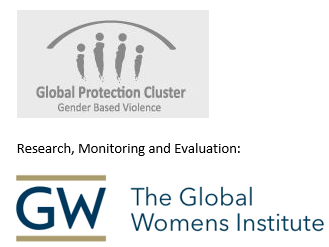|
Areas of Leadership |
See the UN Women Constitutional Database. See the Legislation Module. |
Key Strategies |
For example, see Liberia’s National Action Plan from 2009.
See Peacewomen for guidance, reviews and examples of 1325 national action plans. |
|
Tools |
For tools on how to integrate a gender perspective into a Post-Conflict Needs Assessment (PCNA), from the pre-assessment to the implementation and monitoring phases, see Maguire, S. & Anderlini, S. 2009. PCNA-TRF Tool Kit: Note on Integrating Gender Perspectives. New York: UNIFEM. For examples of community-led programmes in 6 different conflict-affected areas, see: UNIFEM. 2008. Supporting Women’s Engagement in Peace-Building & Preventing Sexual Violence in Conflict- Community-Led Approaches in Afghanistan, Haiti, Liberia, Rwanda, Timor-Leste and Uganda. New York: UNIFEM. For a collection of cutting-edge resources, see the UN Women Sourcebook on Women, Peace and Security. The Sourcebook is available in Arabic, English and French. For a comprehensive overview of women in the peacebuilding process, see: The Peacebuilding Initiative. 2007-2008. Empowerment: Women & Gender Issues: Women, Gender & Peacebuilding Processes. For a guide to promoting the participation of women in elections, see the United Nations Women & Elections. |
|
Example: Community Negotiations for Reconciliation and Conflict Prevention in Burundi An initiative by the Agency for Cooperation and Research in Development (ACORD) in Burundi focuses on reconciliation and conflict prevention through community negotiations, which are followed by a signing of community social contracts in the presence of the community, local authorities, and external witnesses. A gender-specific approach is fully integrated within the initiative to ensure that women participate in equal numbers and with equal decision-making opportunities. At the onset of the community social contract process, an in-depth analysis of the causes and impacts of the conflict is conducted, as well as an analysis of existing traditional responses to conflict. The community dialogue and negotiations bring community members of different ethnicities and groups together to talk through their situation and to listen to testimonies, allowing people to admit to their wrong- doings and ask for forgiveness. Upon mutual agreement within the community, ’social contracts’ are developed and signed and a peace committee is elected to ensure that the social contract is respected. The peace committees in Burundi are democratically elected and include both Hutus and Tutsis, women and men, young people and older community members. ‘Peace projects’ are identified with the objective of benefiting the whole community and contributing to mutual solidarity. The projects are either related to post-conflict reconstruction and rehabilitation, or to conflict prevention. The whole community is expected to take part in the project’s implementation, and the project is expected to have a rapid and lasting impact, such as the reconstruction of a bridge, the opening of a school, local road, or a common mill, grinding, or storage facility. The pilot phase of the initiative, which began in 2002, involved almost 200,000 people.
Source: Excerpted from Moser, 2007, p. 8.
|
Case Study: Women in Nepal’s Peace Process
Active participation of women in the peace process in Nepal is important because many of the Maoist leaders were women, and women served in the Nepalese army and were peace activists during the conflict and have very clear expectations of post-conflict Nepal. In the aftermath of the second people’s movement of 2006 to restore democracy, a national women’s movement emerged which spoke out against human rights violations and violence against women, condemned the continued impunity for violence, and raised awareness on women’s security concerns at civil society level. Deep-rooted social discrimination and political marginalisation deprived women of equal access to the negotiating table, yet some individuals managed to bring their influence to bear in consultation meetings and capacity-building activities aimed at restoring peace in their country. The women’s movement successfully lobbied for a system of proportional representation to elect the constituent assembly, for a 33% female quota in the assembly, and for the involvement of women in the relevant institutions and committees during the transition phase.
Efforts to raise the presence of women in the Nepalese peace process began with a group that comprised Nepalese women who had been nominated for the global initiative “1000 women for the Nobel Prize for Peace 2005”, as well as female members of various political parties and from different sectors of society. In capacity-building seminars and mediation training, women were instructed on negotiating theory and practices. Several participants were later appointed to the Peace Task Force, which formulated statements on documents of the official peace negotiations. As part of a broad-based consultation process, the group drew up the “Charter for Equality 2006”, which was used by the transitional agencies as a reference manual on the handling of equality issues. Moderated conferences and facilitation summits between women and the political parties promoted greater awareness about equal participation of women in Nepalese life and society. Three high-ranking women – the Nepalese minister of foreign affairs, the coordinator of the Peace Women Alliance of Nepal, and the chair of a committee of the constituent assembly – are now influential players in the Nepalese democratisation process.
Despite the continuing poor representation and weak influence of women on the Nepalese political scene, the people’s movement and the ongoing transition process have led to slow yet significant progress towards gender equality. There is growing recognition that sustainable peace and security – including prevention of violence against women – are only feasible if there is equal participation of women and men in political processes. The gradual emergence of a women’s movement has heightened awareness among the leading political players of violence against women and women’s needs in post-conflict Nepal. There is still a long way to go to address violence against women, overcome multiple discrimination, and give proper recognition to gender issues before gender equality finally becomes a reality in Nepal. Nevertheless, meaningful female participation and gender equality have become a firm fixture on the country’s political agenda.
Source: Adapted from Federal Department of Foreign Affairs, Switzerland, 2010, p. 19.)
